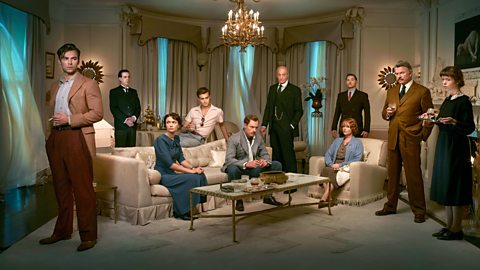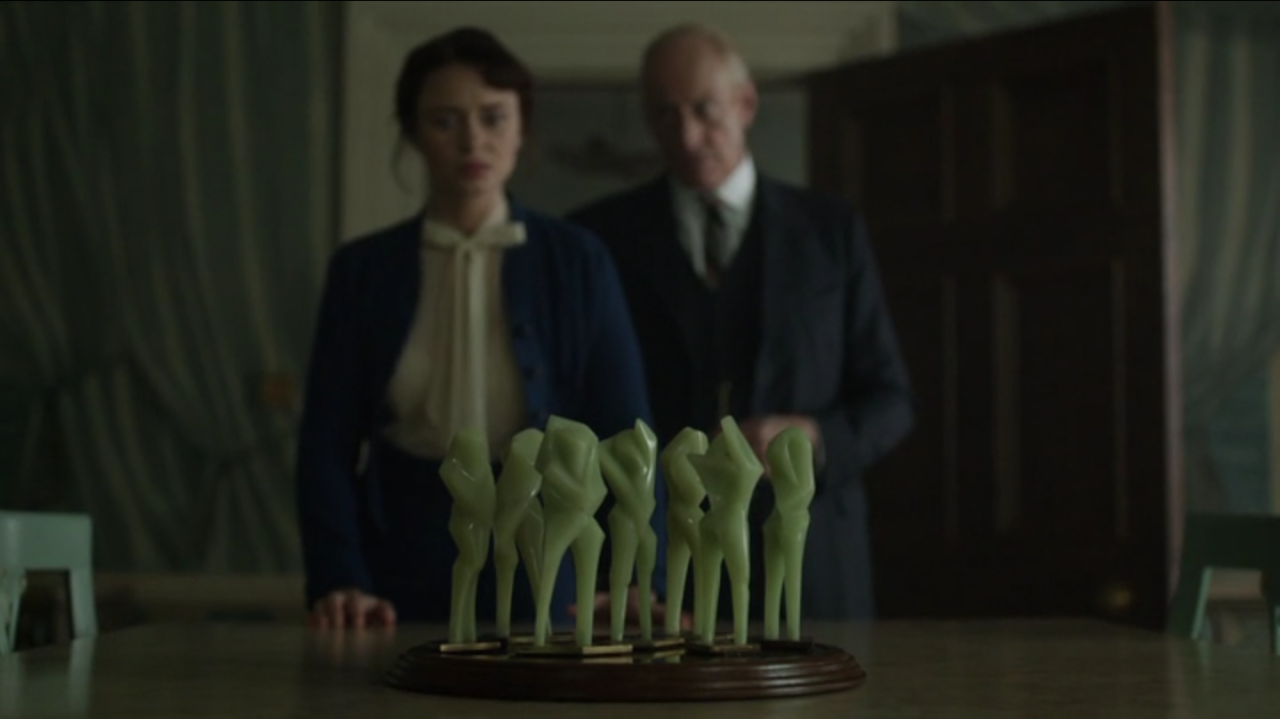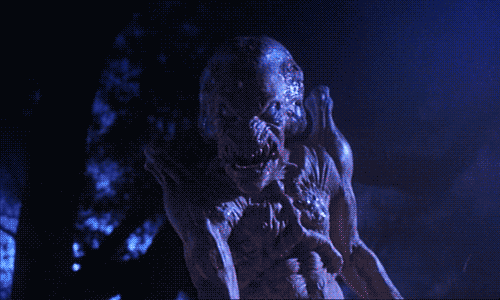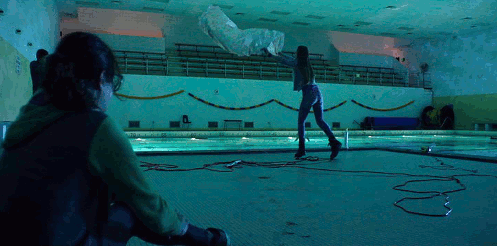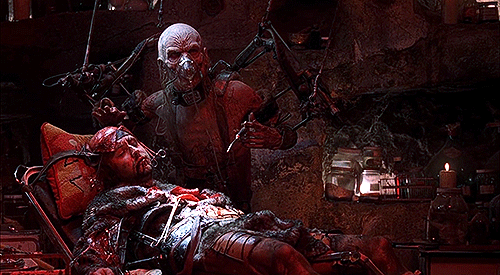The moon is bright and we’re all looking for a fright;
Halloween is upon us once again. Halloween night marks the official peak for
all things horror as thirty-one days of thrills and chills reaches its close.
Before you start missing the season too much, however, here are three
television series that will help you keep the spirit of Halloween all year
long.
 |
| Mother knows best |
Bates
Motel: After a series of lackluster sequels and an
unsuccessful remake, common sense would suggest that Psycho is a franchise best left undisturbed. In a surprising twist,
however, the success of the television series Bates Motel proves that common sense doesn’t apply in the warped
world of Norman Bates. The series pays apt homage to the 1960 film while
telling its own unique tale of the origins of cinema’s original slasher, Norman
Bates. The series owes its success largely to its complex approach to its two
leads, Norman and his mother, Norma, and their codependent relationship. Rather
than the nagging harpy portrayed in Psycho, Norma is a strong-willed woman
who will do whatever is necessary to provide a better life for herself and her
son. Similarly, Norman wins audiences’ hearts as he struggles with typical
teenage growing pains, even as he continues to battle mental illness. In the
series’ earliest seasons, the pair seem relatively normal when compared to the
drug dealers, sex traffickers, child abusers, and crime lords that they are
constantly pitted against in the Twin Peaks-esque town of White Pine Bay. As a
result, audiences can’t help rooting for the series’ off kilter leads even as
they begin their descent into inevitable tragedy. While the series’ earliest
seasons did suffer whenever the focus shifted from the powerhouse performances
of Freddie Highmore and Vera Farmiga, the series hit its full stride midway as
the story became more centralized, allowing viewers a front-row seat to the
fall of Norman and the rise of his infamous ‘Mother’. Even in the midst of its
bloody mayhem, the series challenges viewers with questions concerning the
state of such institutions as public education, mental healthcare, and
the criminal justice system in modern America. Despite its cutting edge story,
the series holds the greatest resonance through its exploration of such timeless
themes as family and identity. Equal parts character study and psychological drama
Bates Motel is never less than a
horror show in the truest sense of the word.
 |
| The Dead Poets' Society for goths |
Are
you Afraid of the Dark?: Running from 1990 to 1996 and later
revived for one season from 1999 to 2000, Are
You Afraid of the Dark was something entirely unique to 1990s viewers; a
horror series designed specifically for children. While the age of its target
audience kept the gore to a minimum, the series ruined many a night’s sleep
through its unsettling atmosphere and implied dangers. Much like early horror
films, which were limited by a lack of special effects and censors, the series
managed to create scares through psychological thrills that would haunt its
young viewers long after more graphic images faded. Along with introducing
young viewers to the horror genre, the series also utilized its terrifying
tales to instill moral lessons as bullies and misbehaving children and teens were
often punished by supernatural forces and shown the error of their ways. For a
fright fest that will have the whole family keeping the lights on, look no
further than Are You Afraid of the Dark?.
 |
| A bonafide classic |
The
Twilight Zone: The
Twilight Zone’s debut in 1959 launched American viewers into a dimension “between
the pit of man’s fears and the summit of his knowledge”. Running from 1959 to
1964, the series captured the imagination of a generation with its twisting
narratives that explored Cold War America’s deepest fears. Although the series
utilized many classic suspense elements, it marked a new chapter in the
thriller genre through its ability to find horror in the most seemingly mundane
places. Despite the fact that the series was written with 1960’s audiences in
mind, the issues that it highlighted ranging from overreliance upon technology,
to beauty standards, to the threat of nuclear conflict remain startlingly
relevant. While the series remains an iconic example of the thriller at its
finest, it owes its enduring popularity to its use of horror elements to warn
and inform rather than merely scare viewers. In its thirty to sixty minute
episodes the series consistently provided audiences with intelligent entertainment
that kept viewers guessing until the final credits rolled. With its
thought-provoking thrills it is little wonder that the series on
to inspire not one but two revival series as well as a feature film. Take a
journey that you won’t forget into “a dimension as vast as space and as
timeless as infinity”….take a trip to The
Twilight Zone.

